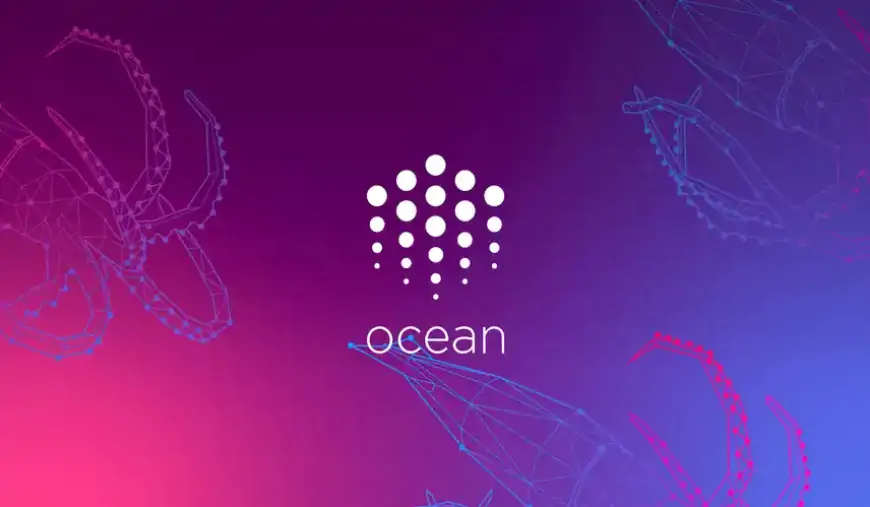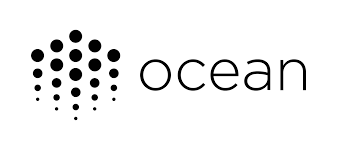Ocean Protocol review: A comprehensive guide by Digimagg
Discover a comprehensive guide to Ocean Protocol by Digimagg, exploring its features, use cases, benefits, and potential drawbacks.

Our Verdict
Our Verdict
Ocean Protocol facilitates the secure and transparent sharing of data, allowing data owners to monetize their data while maintaining control over it. The protocol utilizes blockchain technology to provide a decentralized marketplace for data assets.
 Pros
Pros
- Enhanced AI capabilities
- Transparency and trust
- Monetization opportunities
- Data privacy and security
 Cons
Cons
- Technical issues
- Regulatory challenges
- Dependence on network effect

Starting price
$0.12Is the project unique
YesPercentage of crypto users that will use the project
1-5%Essentially, Ocean Protocol is a decentralized protocol for exchanging data, leveraging blockchain technology and a cryptocurrency token. Its core objective is to catalyze a fresh data economy, empowering individuals and facilitating access to data for researchers. Additionally, it lays the groundwork for a multi-chain Web 3.0 data economy.
Ocean Protocol's technology transforms data into a valuable asset that can be traded, securitized, and utilized as collateral. It positions data as a new asset class and unlocks its inherent value. Every aspect of the network is engineered to grant data providers complete autonomy over how they publish and share their data. Marketplaces and intermediaries can furnish tools to facilitate data discovery and offer value-added services to data consumers.
While oracle solutions such as Chainlink and storage solutions like Filecoin have garnered significant attention, the concept of the 'data economy' remains relatively nascent. Data exchange has the potential to emerge as the next groundbreaking utility for blockchains. Ocean Protocol serves as a foundational element of the endeavor towards a Web 3.0 data economy. Over the past five years, it has introduced tools that enable cryptocurrency enthusiasts to price and trade non-traditional assets such as data and intellectual property.
Where can one purchase the OCEAN token?
If you're seeking a platform to acquire OCEAN cryptocurrency, StealthEX is the ideal solution. This non-custodial exchange provides access to over 700 cryptocurrencies and expedites transactions by requiring only basic information.
How to buy Ocean Protocol coin?
1. Open an online account
To acquire Ocean Tokens, begin by creating an account with a cryptocurrency exchange or brokerage that supports them. Since Ocean operates on the Ethereum blockchain, you can convert Ethereum to Ocean directly through a decentralized exchange like Uniswap. If you don’t already hold Ethereum, you'll need to register with a crypto exchange. Binance is a prominent exchange supporting Ocean Protocol. Opening an account with Binance requires providing personal information for compliance purposes, akin to traditional stock brokerages. Given Binance's high liquidity, it's advisable to use it for efficient Ocean trading on centralized exchanges.
2. Purchase a wallet
Due to the online hacking risks associated with exchanges, it’s recommended to transfer your Ocean Tokens to a wallet for safekeeping. You can choose between hardware wallets and software wallets. Hardware wallets are the most secure as they store your cryptocurrency offline on a physical device, making it inaccessible to hackers.
3. Make your purchase
Once you've selected where to store your Ocean Tokens, proceed with the purchase. On centralized exchanges like Binance, you have the option to place market orders or limit orders. Market orders execute instantly at the prevailing market price, whereas limit orders only execute if the price reaches a specified level. You can cancel limit orders anytime before they are filled.
Ocean Protocol: History and partnerships
Ocean Protocol, established in 2017, operates under the governance of a Singapore-based nonprofit foundation. Its core objectives include ensuring open access to the protocol and platform, promoting data governance, fostering ecosystem growth, and advancing decentralization over time. Bruce Pon is the founder of Ocean Protocol.
The platform has made significant strides in development and has initiated collaborations with numerous companies, primarily focusing on data-sharing use cases. Partnerships include notable names like Unilever, Aviva, Johnson & Johnson, Microsoft, Fujitsu, among others. Additionally, Ocean Protocol has secured partnerships with prominent entities such as IBM Watson AI XPRIZE and Enigma.
Ocean Protocol crypto
Ocean tokens (OCEAN) play a vital role within the Ocean Protocol network, serving as the primary means of value exchange, powering the protocol, and incentivizing keeper nodes. For data publishers, OCEAN tokens offer the opportunity to monetize their data while maintaining privacy and control. Additionally, users can utilize OCEAN tokens to access data, including private datasets previously unavailable to them.
Through Ocean Protocol, users can initiate an Initial Data Offering (IDO) by publishing datasets. These datasets become data assets, each associated with its own ERC721 data NFT & ERC20 datatoken. Publishers have the flexibility to set a fixed price or allow for an auto-discovery pricing mechanism facilitated by an Automated Market Maker (AMM) powered by Balancer on Ocean Market.
Staking OCEAN in a data token AMM pool is open to all users and serves as a means of providing liquidity. Stakers also act as curators, as the amount of stake they provide serves as a proxy for dataset quality.
Earn Ocean tokens
Users have various opportunities to earn tokens within the Ocean Protocol ecosystem:
- Providing data: Data providers with extensive datasets can publish their data for sharing using different pricing mechanisms, while maintaining full control and complying with data privacy regulations.
- Becoming a marketplace: Data marketplaces can integrate with the Ocean protocol network to utilize existing data and attract new buyers. Earnings can come from selling data, staking, or establishing and managing a marketplace. Sellers receive the majority of revenue from dataset sales, while stakers and marketplace operators also earn a portion of the transaction fees.
- Curating data: Valuable public data often remains unused on servers, at risk of being removed due to various factors. Ocean Protocol incentivizes the publication, curation, and preservation of public data, thereby expanding the market for potential buyers.
- Providing network services: Network keepers offer validation and verification services, maintain the blockchain transaction history, and provide relevant services to the community, earning rewards for their contributions.
Features of Ocean Protocol
Ocean Protocol provides users with a variety of functionalities to manage their data effectively:
- Publishing data: Users can list their datasets for sale on Ocean Market by providing a URL, adding a description, and clicking 'publish'.
- Staking on data: Users can contribute OCEAN liquidity to Automated Market Maker (AMM) pools to stake on data. They can also unstake by removing liquidity from the pools.
- Discovering data: Ocean Protocol allows users to explore, search, and filter datasets available on Ocean Market.
- Buying data: Users can purchase datasets' datatokens using OCEAN or other supported tokens.
- Consuming data: To access the data, users can spend 1.0 datatokens, which are then transferred to the publisher.
- Earning incentives: By staking OCEAN tokens, users can earn rewards through swap transactions in the pool. These actions can be performed through Ocean Market.
Ocean Protocol update
Ocean Protocol is expanding its horizons in 2022 with several new developments:
- Data-exchange products: The rollout of Ocean V4 introduces Data NFTs and a plethora of ecosystem products, from data wallets to federated learning solutions.
- Staking products: New offerings include Data Farming (DF), the H2O stable asset, and veOCEAN.
- Traction-driving projects: Initiatives like Data Bounties and DF Crunch are gaining momentum.
- Ecosystem Funding: A refined approach enables teams to secure early-stage grants and scale up with grants or investment through Ocean Shipyard (redux).
- Staking enhancements: The community can expect more staking options, starting with the release of veOCEAN, incentivizing OCEAN holders to lock up their tokens for increased Data Farming rewards and governance power. The introduction of Curve "ve" contracts and Curve gauges further enriches the staking ecosystem.
The Ocean V4 update, set to launch in Q2 2022, introduces significant enhancements:
- Data NFTs: This feature aims to bridge NFTs with Intellectual Property (IP), benefiting NFT creators and collectors. It focuses on Solidity code-level implementations and retains ERC20 datatokens, serving as licenses for base IP usage.
- Community monetization support: Third-party marketplaces can now earn fees from swapping, staking, and consuming data, providing more control over fee rates compared to V3.
Additionally, Ocean V4 includes tooling to facilitate the migration of data assets and pools from Ocean V3. Initially, it will be deployed on the same EVM chains as V3, including Ethereum mainnet, Polygon, Binance Smart Chain, Moonriver, and Energy Web Chain.
Ocean Protocol price prediction
With numerous developments in progress, the price of its primary token, OCEAN, is poised to rise, presenting crypto enthusiasts with a promising investment. Currently trading around $0.1856, let's explore expert forecasts for the network's future.
TechNewsLeader predicts that with significant collaboration with financial institutions, OCEAN could reach $0.96 by 2025, and by 2030, it could average $5.25, with a minimum of $5.10 and a maximum of $6.19.
DigitalCoinPrice is less bullish, anticipating OCEAN to reach $1 by 2031, with projections of stable growth.
Conversely, PricePrediction is more optimistic, forecasting a peak of $0.92 for OCEAN by 2025 and a surge to $6.14 by 2030.
Moreover, users now have the option to buy cryptocurrencies using fiat, with the added benefit of fixed rates.














































